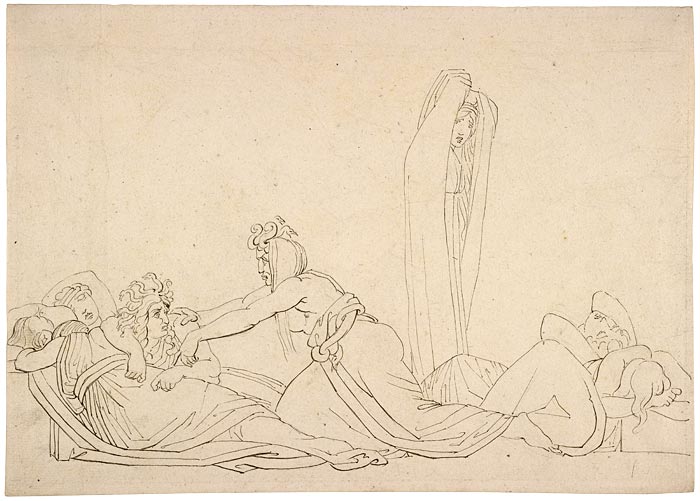
Flaxman received a commission to illustrate Homer's Iliad and Odyssey while in Rome in 1792. Shortly thereafter he received another commission to illustrate the works of Aeschylus, which were engraved by Thomas Piroli and published in 1795, after Flaxman's return to London. The present design illustrates a scene from Clytemnestra, with the heroine mourning the death of Aegisthus.
Flaxman's crisply linear illustrations achieved international acclaim. Artist George Romney described them as "outlines without shadow, but in the style of ancient art. They are simple, grand, and pure."
II. Friends and Followers
Among Blake's early friends were professors and other students at the Royal Academy, many of whom became leading figures of the age. He frequently engraved works by Thomas Stothard, Henry Fuseli, and John Flaxman, for example, as will be seen in this gallery. In his day Blake was more widely esteemed as a fine engraver than as a painter, his own imaginative work having been produced primarily on speculation or for patrons. Only nine years before Blake's death, the young artist John Linnell (1792–1882) became both a patron and friend. Through him Blake became acquainted with several youthful artists who came to call themselves the Ancients, after Blake's frequent reference to earlier artists as "ancients." They were inspired by Blake's imaginative spirit and his love for the art of Michelangelo as well as for the poetry of Milton. These men––Edward Calvert, Samuel Palmer, George Richmond, Francis Oliver Finch, George Cumberland, Frederick Tatham, and Henry Walter––are represented in the Morgan's collections.
